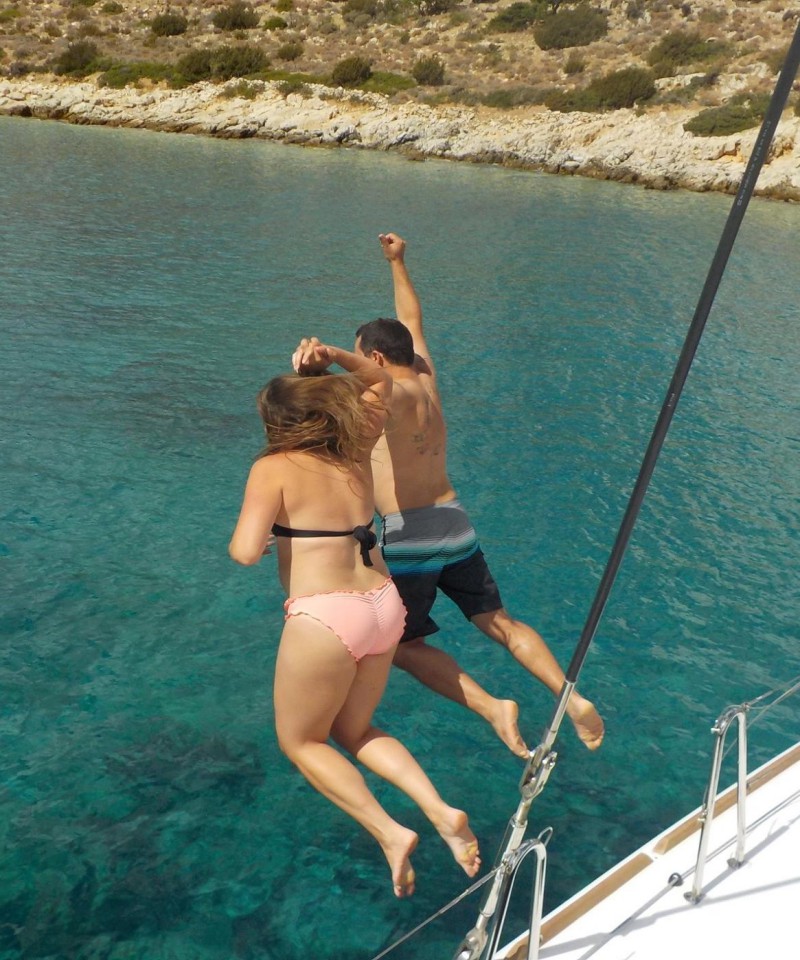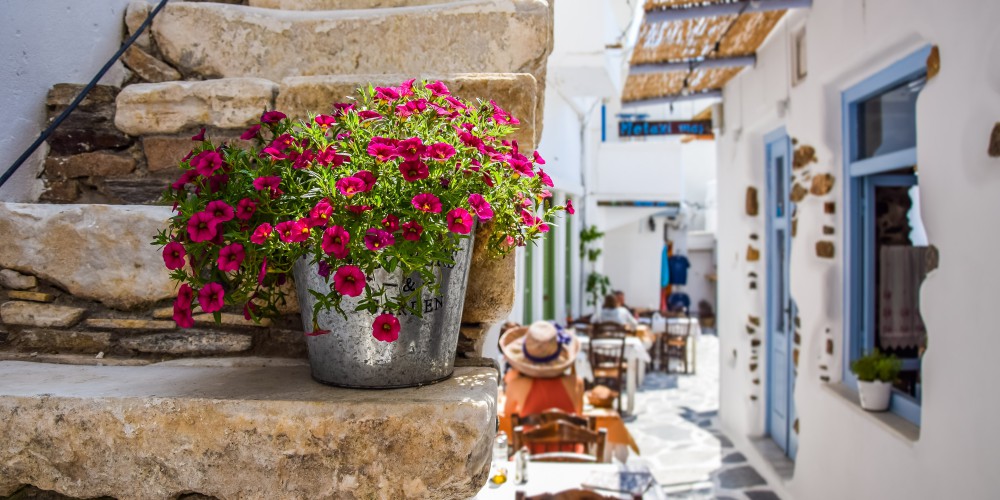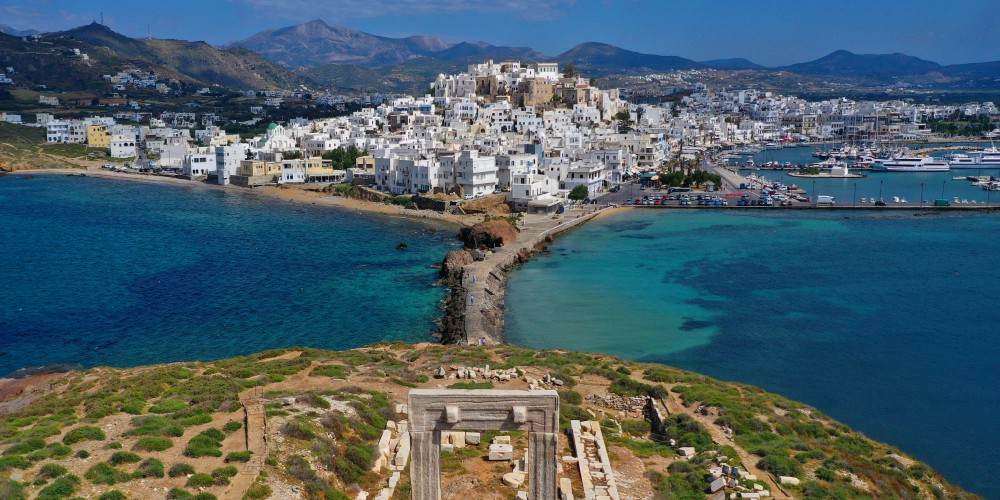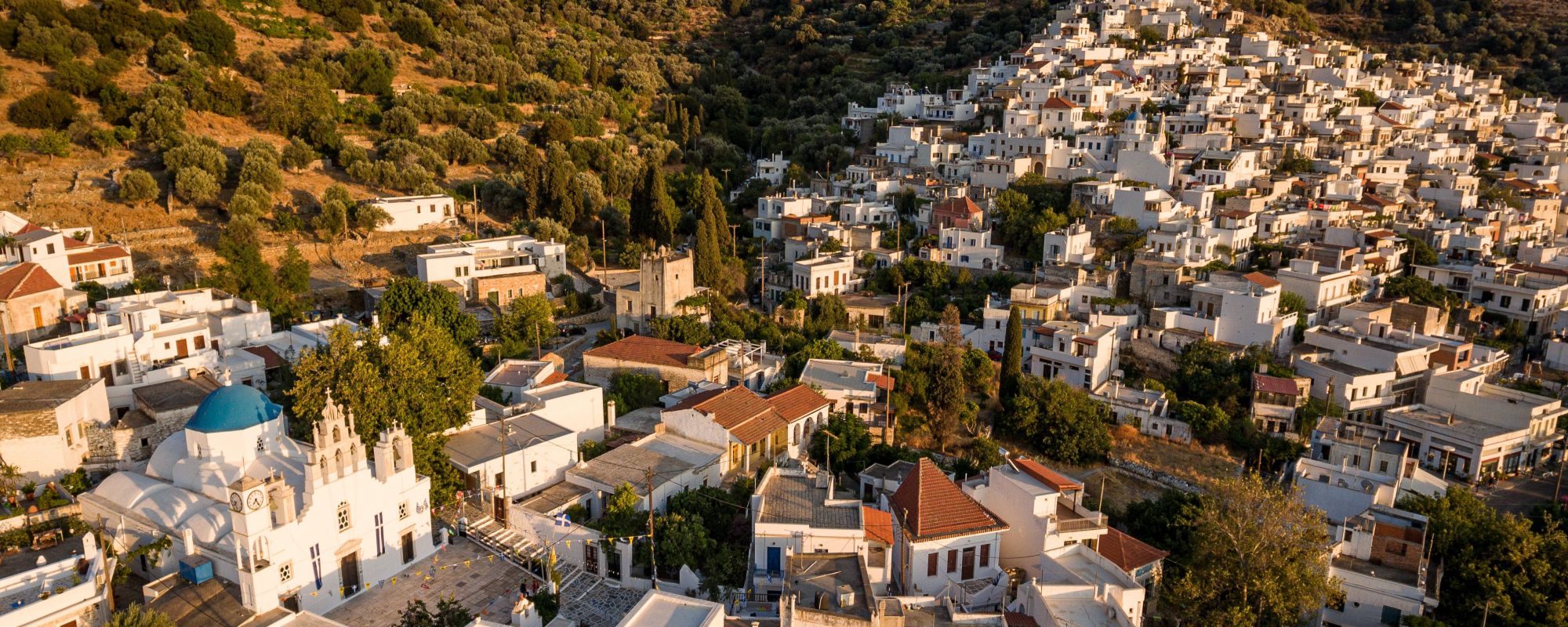
The Mythological Tale of Naxos
Key Takeaways
- Naxos has a rich mythological background and has been continuously inhabited since the 5th Millennium BC.
- The island's name has different origins, emphasizing its ties to both Asia Minor and the Minoan Civilization.
- Dionysus, the god of wine and revelry, played a prominent role in Naxos mythology.
- Other significant deities like Zeus, Apollo, and Demeter were also worshipped in Naxos.
Naxos, the largest island of the Cyclades, has been continuously inhabited since the 5th Millennium BC. until today.
In its varied history, myth, and reality are constantly involved in a surge of mystery and imagination while keeping our desire for knowledge and understanding of the way of life of our ancestors undiminished.
Here are the most fascinating parts of Naxos mythology.
How Did the Greek Island of Naxos Get its Name?
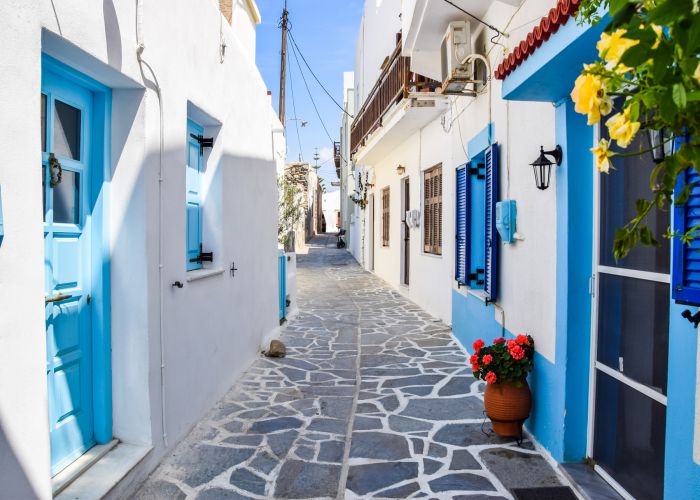
Regarding the current name of the island, the prevailing opinion is that it received the name Naxos after Naxos, the king of Caria, a country in Asia Minor, whose inhabitants, the Kares, also lived in this place.
However, according to Greek mythology, Naxos was the son of Apollo and Akali, the daughter of King Minos.
It is therefore said that the island took its name from him, thus showing the island's connection with the Minoan Civilization.
Naxos' Mythological Background
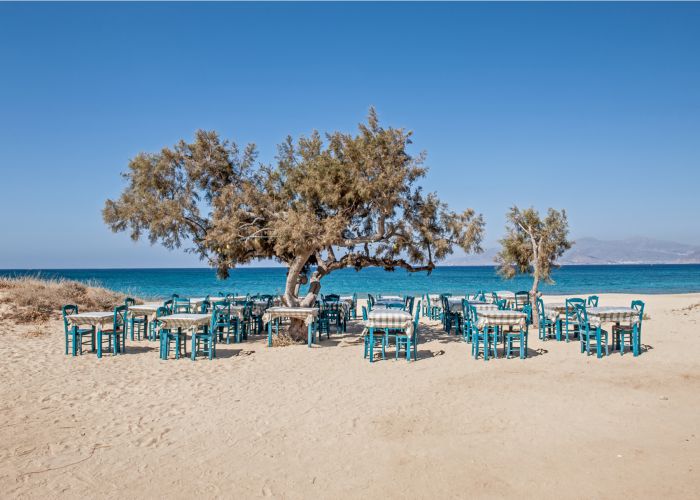
Mythology holds a very important part of the history and culture of the island of Naxos.
Dionysus, Semele, daughter of King Cadmus of Thebes, Theseus, Ariadne, and local nymphs, have left their traces scattered throughout the island, which rises majestically in the middle of the Aegean Sea.
Ancient Naxians were people of deep faith who were looking for answers to the unexplained.
By sea, they could communicate with other areas of the world, and obviously, they were culturally influenced.
Dionysus
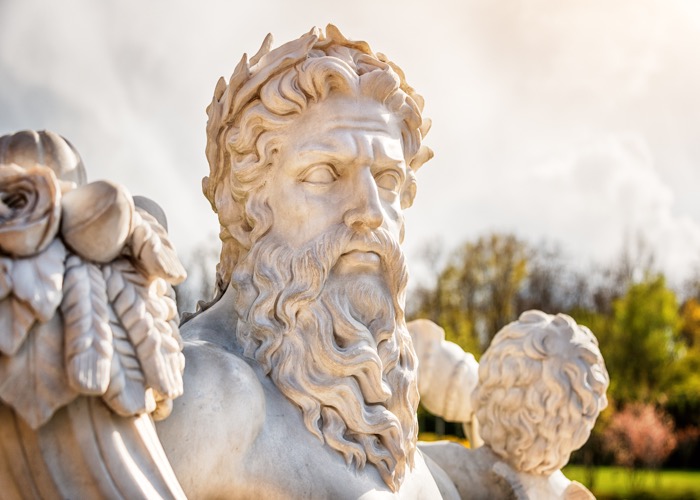
According to mythology, the Naxians gladly accepted the presence of the god Dionysus whose real origin was Thrace or, according to others, some Eastern Country.
The famous historian Diodorus of Sicily stated that the Naxian mythographers believe that the god Dionysus was born on the island of Naxos from Semele, daughter of Cadmus, king of Thebes, and from king Asterios, while always considering Zeus, holder of the Olympian throne, as his father.
Zeus entrusted the upbringing of Dionysus to the Naxian nymphs Filia, Kleidis, and Koronis, in the cave of Za or, according to others, in the 'Kako Spileo' -or 'Bad Cave'- of Koronis, where an inscription was found that says 'Dionysus o Drys.'
Satyrs and Maenads

Dionysus was accompanied by Satyrs and Maenads (women), who all danced together, often reaching ecstasy, drinking the sweet wine of the island.
Dionysus emerged personified as joy and fun, wanting to show his love for the island of Naxos gave euphoria to its soils and to the cultivation of vines.
This is how the Naxians have been producing excellent quality wines for centuries.
Out of gratitude and love for the god, who brought them joy and fun in their lives, the Naxians founded a temple for his worship in Yria.
Plutarch says that they had established festivities in honor of 'The Ancient Dionysia' twice a year, with games and sacrifices.
The celebrations took place simultaneously in Chora for the townspeople, and in Yria, for the rural villagers.
One celebration took place during the spring when the first leaves of the vine were coming out, and it contained games, fun, and crazy revelry, while the other was at the end of the year, in Autumn, with the harvest and the pressing of the grapes.
The youth danced with wreaths on their heads made of vines while the satyrs were disguised as dancers. It is said that the custom of the Apocreos with 'masquerades' is a remnant of the cult of Dionysus.
The Marriage of Dionysus with Ariadne in Greek Mythology
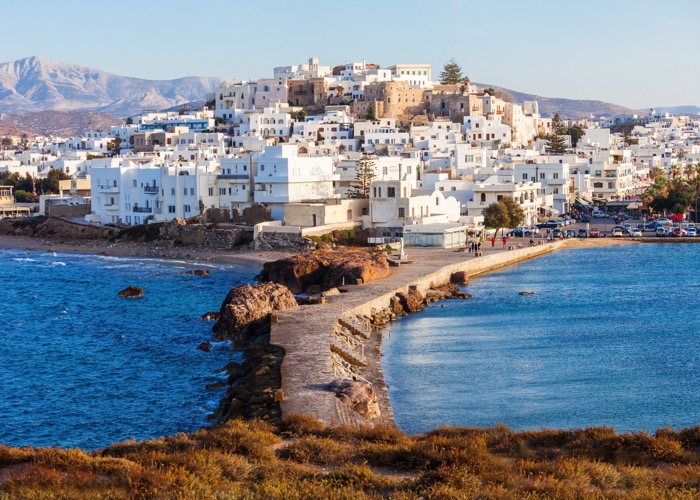
The well-known myth of the marriage of Dionysos with Ariadne is exclusively connected to Naxos.
According to the legend, as reported by Diodorus the Siculus, Theseus, after killing the Minotaur, the famous creature that was half man half bull that was trapped in a labyrinth, with the help of Ariadne, daughter of Minos, sailed from Crete to Athens, taking the beautiful girl with him.
Due to heavy seas, they were forced to drop anchor in Naxos to rest.
Ariadne went out to see the island, and as she was tired, she fell asleep on the beach.
Dionysus, who had already seen Ariadne, immediately fell in love with her, and in order not to lose her, he visited Theseus in his sleep and told him to leave without her.
He countered, but the god persisted, asserting his superiority because of his divine status.
Fearing the consequences of the god's punishment, Theseus was forced to flee. Dionysus then went to Ariadne, and as soon as she woke up, she saw him standing next to her, speaking words of love.
She immediately asked him about Theseus, but he replied that he had gone while he gave her wine to drink from a golden cup and offered her a golden crown, the work of Hephaestus, with precious Indian gems in the form of nine stars.
In another story, the wreath was a gift from Venus and Time for their weddings.
It is said that it was so brilliant that the gods placed it in the sky to shine alongside the other stars and called it the constellation of Ariadne.
Being angry with Theseus, Ariadne accepted Dionysus' proposal.
He took her to Mount Drios, where allegedly the local nymphs used to live. Nowadays, it has been renamed Mount Koronos. From there, they left for Olympus.
It is also said that the children of Dionysus and Ariadne were Oinopion (Wine Drinker), Staphylos (Grape), and Evanthi (Lovely Flower).
The variations of the myth of Ariadne and Dionysus are many and have important differences.
Others claim that Ariadne committed suicide by throwing herself into the sea after learning that Theseus had abandoned her.
Others argue that there were two Ariadnes.
Another myth claims that Theseus left because he loved Aegli in Athens.
Zeus in Naxos Mythology
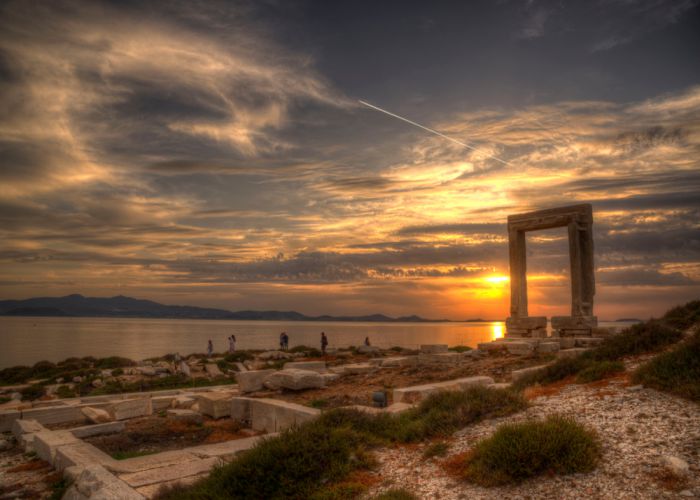
Dionysus was the God who was worshiped more than the other Gods in Naxos.
Nevertheless, the father of the gods, Zeus, was also worshiped in Naxos, being called Zeus Eubouleus, protector of the Naxians. Aglaosthenes, a historian from Naxos, says that when Zeus was a child, he was abducted from Crete by Idaion Andron (Ide) and taken to Naxos to be rescued by his father, Kronos.
He grew up in the cave of Zas, which is one of his temples.
There, he grew up, and when he was ready, he claimed the kingship of the gods by campaigning against the Titans.
A very large area was dedicated to Zeus on the slope of the highest mountain of Naxos 'Zas,' a sacred mosque in honor of the god, which was the most important religious center as well as a refuge for the shepherds of the area.
There are two inscriptions on these rocks from the 4th century BC to define and protect the temple, which read 'Oros Dios Milosiou' (Mountain of Zeus of Milesius).
The local people who worshiped the god, dressed in "cloaks" made of sheep skin, climbed to the top of Mount Zas in summer when there was a severe drought to ask God to send cool winds and save people from the despair of the heat.
Apollo and His Traces in Naxos Town
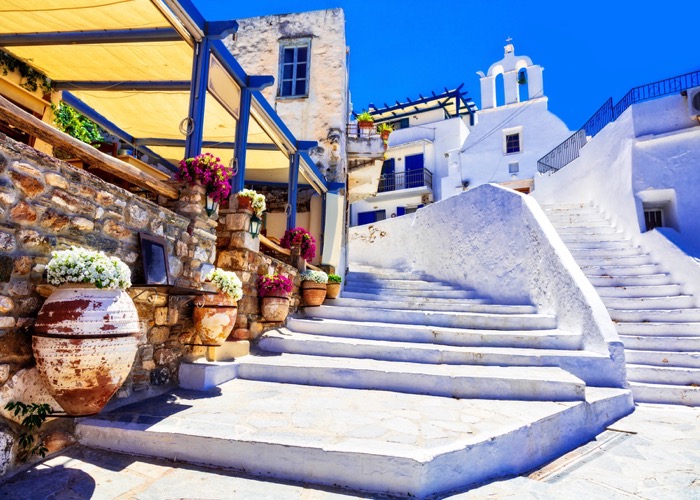
Apollo, the god of light and music, was also worshiped in Naxos.
He was the son of Zeus and Letus. Leto, because of her anger and persecution by Hera, wife of Zeus.
Leto was protected by Poseidon and taken by a dolphin to Delos, where Apollo and Artemis were born.
There are three areas mentioned as places of worship of the god.
In Naxos town, where the famous 'Portara' is located, the imposing huge gate of the temple was erected by the tyrant of the island, Lygdami, but it was never finished, and nowadays is carried as the main emblem of Naxos.
What's more, there is a city in Naxos called Tragea, where the god Apollo was worshiped, and also on the mountain of Apollo, there is an inscription which is engraved on a rock: 'Holy Mountain of the village of Apollo.'
In this area, near the site of the ancient quarries, there was a sacred outdoor space, as testified by the above inscription of the 3rd BC. century.
Today in this area, there is still the famous 'Kouros of Apollo,' a gigantic statue of the Bearded Dionysus, which was probably taken from his temple in Yria.
A sign of his worship is still the huge statue of the god, which was dedicated in the temple of Delos by Naxians, with the inscription 'Apollon o Naxios.'
Demeter

A special place in the hearts of the people of Naxos was held by the goddess Demeter and her daughter Persephone.
Demeter was the goddess of fertility and soil.
The myth of the mother and daughter, who was kidnapped by Hades and brought to the Underworld and became the queen of Hades, is known worldwide.
This little story symbolizes the cycle of the seasons on Earth. Sadness with the withering of nature in Autumn and Winter, and joy with rebirth in Spring and Summer.
This important deity, protector of farmers and agriculture, was honored and loved very much by the people of Naxos, who built a gorgeous temple in her honor, in a prominent position, in the fertile plain of 'Vazaios,' in the area of Sangri.
This ruined temple has now been restored using the same material it was manufactured with, marble, which was collected from the surrounding area.
It is considered the most important and representative sample of an ancient temple, valuable not only for the additional historical and social knowledge of Naxos but also for the understanding of religion and worship in ancient times.
It contains important architectural elements, which we later encountered in the Parthenon.
Less Popular Gods of Greek Mythology in Naxos

In the mythology of Naxos island, the presence and worship of other gods, perhaps less important, have been mentioned.
Such examples are the worship of Ares on the Fanari mountain located between Aperathos and the Tragea basin.
There was probably a holy mosque in honor of the god we know about after recovering an inscription in the ruins of the church of Agios Georgios, which read 'Chapel of Ares.'
Tradition states that Ares, the god of war, killed Adonis, Aphrodite's lover, and the giants Otus and Ephialtes (twin sons of Poseidon) locked him in a jar for 13 months as punishment.
After he was released, he fled to Naxos and hid in 'Sideropetra,' which translates to 'the stone that eats iron,' the well-known Smirigli, a very hard type of Iron.
The giants, as the legend says, had supernatural powers, extremely dangerous, which grew as they grew in age.
They threatened to dethrone Zeus from Olympus. Zeus, to avoid them, sent them to Naxos to find their mother, who had been abducted by Naxians.
There, Artemis tricked them into killing one another.
Almost all the monuments of Naxos date from the 8th to the 3rd BC. century. During this important period, the Naxian quarry workers applied pioneering ways to the architecture and plastic art of the archaic culture.
Beginning with the carving of 'kouros,' huge statues of human figures, they continued with countless famous figurines typical to the Cyclades islands.
Finally, they were the first to create a life-size statue of a 'Kori,' a mortal woman.
Final Thoughts
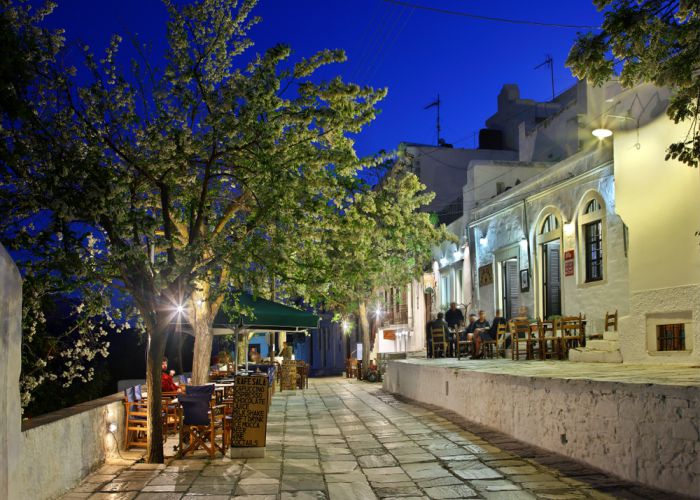
Behind the striking architecture, mesmerizing Naxos beaches, scrumptious local gastronomy, rich vineyards, and fascinating history, Greece, and Naxos in particular, hides a world of mythology treasures worth exploring that date past the time of Marco Sanudo.
From the vibrant Naxos town to Naxos' traditional villages, don't leave Naxos without diving deep into its rich mythology and history!





